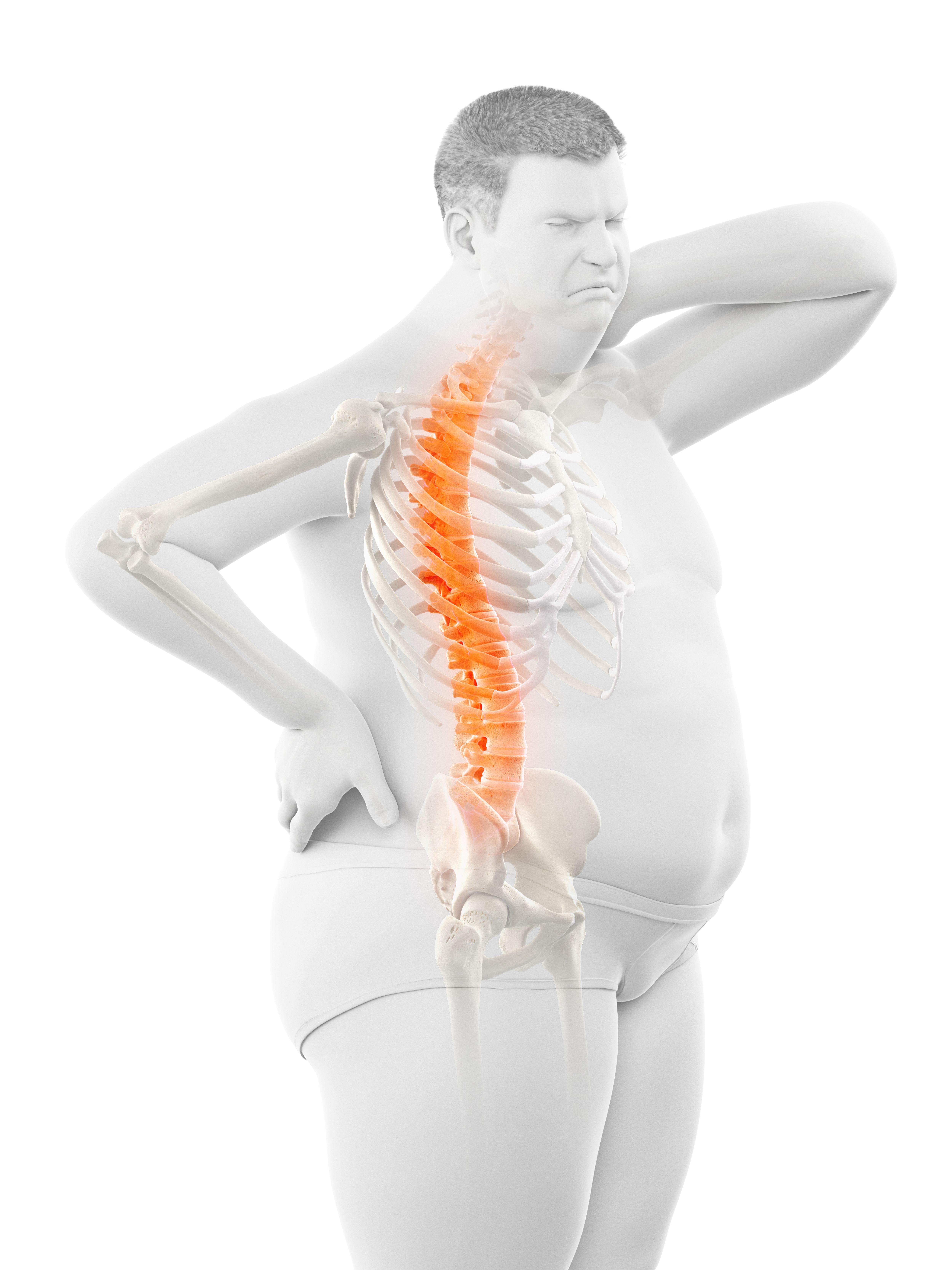Back pain: four little-known risk factors
There are risk factors for back pain that are rarely mentioned. These include heredity, smoking, diet and poor footwear. Here are some explanations.
Carrying heavy objects and inactivity are well-known risk factors for back pain. But there are lesser-known factors that are sometimes cited as increasing the risk of developing chronic back pain. First and foremost, heredity. Next come smoking, foot problems and an unsuitable diet...
Low back pain: is it hereditary?
This seems to be the conclusion of a study published in February 1999 (1) which used MRI to measure the state of degeneration of the intervertebral discs of 172 identical twins and 154 fraternal twins. The mean age of the two groups was 52 and 54 respectively. After adjusting for age, weight, height and occupation, the study concluded that cervical and lumbar problems were indeed hereditary in over 60% of cases.
Two other studies were carried out in 2008 and 2014 by Canadian researchers. The first also compared images of the lumbar vertebrae of 152 identical twins and 148 fraternal twins, aged between 35 and 70. The research concluded that heredity played a part, varying from 29% to 54%, depending on the location of the discs concerned (2). These results are lower than those of a second study conducted in 2014, which showed that 67% of spinal canal narrowing in the lumbar region is hereditary (3).
But while low back pain is partly hereditary, it often has other causes. Being overweight is a major risk factor, both because it alters the curvature of the spine and because it goes hand in hand with little physical exercise.
Watch your weight to avoid back pain
A study published in 2005 in the International Journal of Obesity concludes that a body mass index (BMI) of over 25 increases the risk of degeneration of the intervertebral disc, and hence of low back pain. The hypothesis most often put forward is that if you are overweight, the intervertebral discs compress and become dehydrated. And the spine becomes more fragile (4). That's why it's essential to eat well to maintain a normal BMI (between 18.5 and 24.9), and to take regular exercise.

Smoking is thought to encourage chronic low back pain
Establishing a link between nicotine and back pain: that's the aim of a team of researchers from Northwestern University Medical School. For this study, published in 2014, they followed 160 people suffering from back pain for 4 to 12 weeks (5). The study also included 35 people who had been suffering from back pain for more than 5 years, as well as 32 people who were pain-free. All these people received the same treatments for one year.
The researchers found that certain areas of the brain linked to pain were much more active in smokers. They concluded that smoking was a major risk factor for chronic pain.
In addition, nicotine is said to have significant negative effects on the musculoskeletal system, leading to its weakening (5).
Foot problems that go all the way to your back
Feet that are badly shod or too hollow can cause back pain. A deformity, poor positioning or the slightest abnormality in the support of the feet can travel up the leg and reach the back or even the neck.
By assessing these posture problems, the chiropodist or posturologist can suggest appropriate treatment: wearing a heel cup may be indicated if one leg is too short. An orthopaedic insole made from absorbent material may be prescribed to modify support and straighten a rotated foot.
More generally, to avoid back pain, avoid shoes with high heels, that are too flat or too hard. And, of course, wear shoes that fit (6)!

- Sambrook PN et al. Genetic influences on cervical and lumbar disc degeneration: a magnetic resonance imaging study in twins. Arthritis Rheum. 1999 Feb ; 42(2), pages 66-72.
- Battié MC et al. Genetic and environmental effects on disc degeneration by phenotype and spinal level : a multivariate twin study. Spine, december 2008 ; volume 33, issue 25, pages 2801-2808. DOI: 10.1097/BRS.0b013e31818043b7.
- Battié MC et al. Lumbar spinal stenosis is a highly genetic condition partly mediated by disc degeneration. Arthritis Rheumatol, december 2014; 66(12), pages3505–3510. doi: 10.1002/art.38823.
- Bogdan P et al. Smoking Increases Risk of Pain Chronification Through Shared Corticostriatal Circuitry. Hum Brain Mapp. 2015 Feb ; 36(2), pages 683–694.
- Victoria B et al. Effets délétères du tabagisme sur l’appareil musculo-squelettique. Revue Medicale Suisse 2014 ; volume 10, pages 1466-1471.
- Liuke M et al. Disc degeneration of the lumbar spine in relation to overweight. International Journal of Obesity (Londres), août 2005 ; 29(8), pages 903-908.


